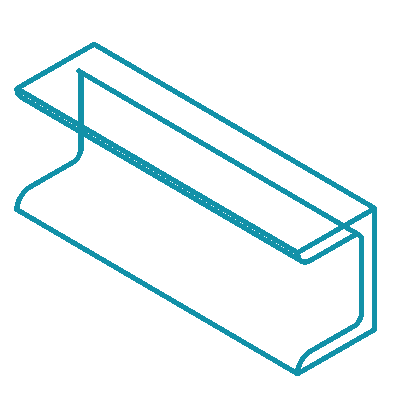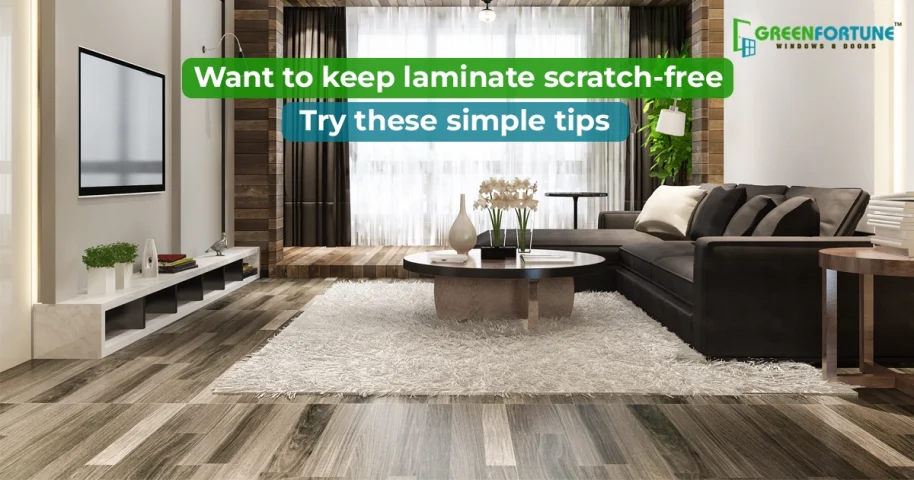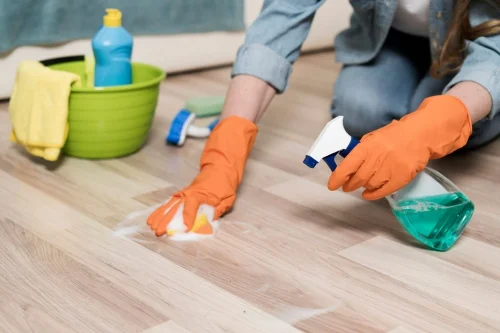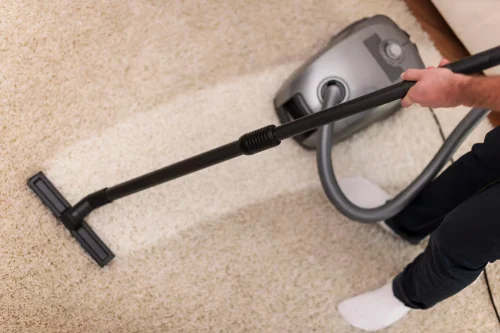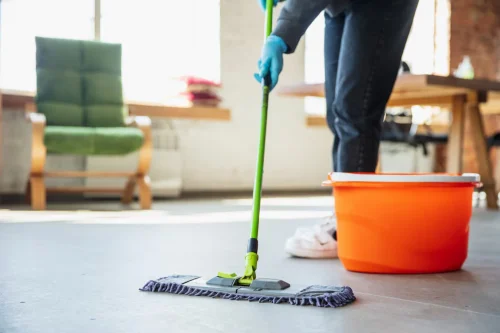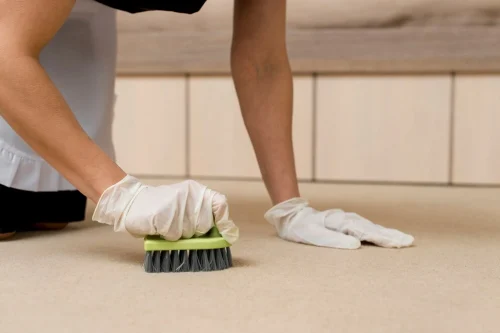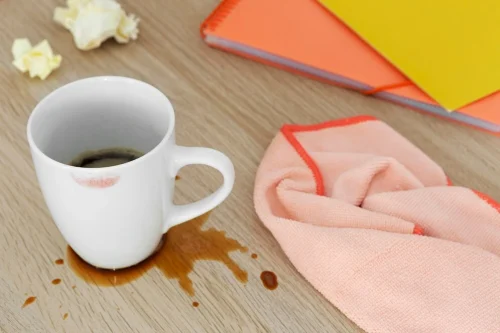
20 Benefits of Solid Wood Furniture You Need to Know
March 20, 2025
Veneer vs Laminate: Understanding Their Differences for Wardrobe Design
March 21, 2025Laminate floors and cabinets are a favourite in homes for their sleek, stylish appearance and durability. They mimic the beauty of real wood but come at a more affordable price point. However, despite their resilience, they still require proper care to maintain their shine and stay in top condition.
That’s where laminate cleaning comes in. In this guide, we will share 5 simple tips to clean and polish laminate floors and cabinets, making them last longer while looking fresh and glossy.
By the end of this post, you’ll know the dos and don’ts of cleaning laminate surfaces, learn about the best products and discover quick and easy routines to maintain your floors and cabinets.
Plus, we’ll introduce you to a sustainable and eco-friendly cleaning solution that can help you with all your laminate cleaning needs. Let’s dive in!
Table of contents
1. Choose the Right Laminate Cleaner Polish
The key to effective cleaning is using the right products. You can't just grab any household cleaner off the shelf and expect good results. Laminate surfaces have a protective layer, and using harsh chemicals or the wrong type of cleaner can strip away that protection, leaving the laminate looking dull and vulnerable to damage. So, what should you look for in a laminate cleaner polish?
Tip: Always use a product specifically designed for laminate surfaces. These cleaners are formulated to remove dirt and grime without damaging the protective coating.
- For floors, a laminate wood cleaner like Bona or Black Diamond is highly recommended.
- For cabinets, opt for a laminate cabinet cleaner such as Rejuvenate.
Pro Tip: If you prefer natural solutions, you can make your own cleaner by mixing equal parts of vinegar and water. This is an eco-friendly and effective way to clean laminate without leaving streaks.
However, be cautious with homemade cleaners. While vinegar is great for general cleaning, it’s acidic, and over time, it can break down the surface if used too frequently. It’s always best to alternate between store-bought laminate-safe cleaners and homemade solutions for the best care.
2. Dust and Vacuum Regularly
Before you start any deep cleaning, it’s crucial to remove dust, dirt, and debris from the surface. Dust particles might seem harmless, but when combined with moisture, they can act like abrasive particles that scratch the laminate surface. Regular dusting and vacuuming can prevent this damage and keep your laminate floors and cabinets looking new.
- Tip: Use a microfiber mop or a vacuum with a soft brush attachment to dust and clean the surface. Microfiber is especially great because it traps dust and dirt without scratching the laminate.
Pro Tip:
- Avoid using vacuum attachments with rotating brushes, as they can scratch the surface.
- For laminate wood floors, sweeping regularly with a soft-bristle broom or vacuuming with the right attachment is ideal.
- For cabinets, a microfiber cloth will do the trick.
Wipe them down at least once a week to prevent dust buildup, especially in high-traffic areas like the kitchen. Keeping your laminate dust-free not only maintains its appearance but also makes deep cleaning and polishing much easier.
Also read: Could a Cleaning Wardrobe Make Your Mornings Easier?
3. Damp Mop for a Deeper Clean
When it comes to cleaning laminate wood floors, one of the biggest mistakes people make is using too much water. Laminate is made from compressed fiberboard with a photographic image of wood on top, and water can seep into the seams, causing the boards to swell, warp, or separate over time. To avoid this, always use a damp mop, not a soaking wet one.
- Tip: Wring out your mop or cloth thoroughly so that it’s just slightly damp. Alternatively, use a spray bottle filled with your preferred laminate cleaner polish to mist the surface lightly before mopping.
- Pro Tip: For laminate cabinets, follow the same principle. A damp microfiber cloth is the best option for wiping down cabinet surfaces. If the cabinets are especially grimy (such as in the kitchen where grease can accumulate), apply a small amount of laminate cabinet cleaner and gently wipe in a circular motion.
Avoid steam cleaners, as the heat and moisture can warp the laminate surface over time. If you have tough stains on your laminate wood floors, use a slightly dampened microfiber cloth to spot clean instead of soaking the entire surface.
4. Polish to Restore Shine
Once your laminate floors and cabinets are clean, the next step is polishing them to restore their natural shine. Polishing laminate surfaces also adds a protective layer, which helps to prevent scratches and wear.
Tip:
- Use a laminate-specific polish to bring out the glossy finish of your floors and cabinets.
- Products like Rejuvenate’s floor restorer and polish are excellent for this purpose.
- Apply the polish using a soft, clean cloth for cabinets or a microfiber mop for floors.
- Make sure to work in small sections to avoid streaks or uneven application.
Pro Tip: Buffing after polishing will give your laminate surfaces a smooth, shiny finish. For laminate wood floors, use a dry microfiber mop to lightly buff the surface once the polish has dried.
You should only polish your laminate surfaces once every few months to avoid buildup. Regular polishing, combined with proper laminate cleaning, will keep your laminate looking brand new for years to come.
5. Prevent Scratches and Spills
While cleaning and polishing are essential, preventing damage is the best way to maintain the beauty of laminate floors and cabinets in the long run. A few preventive measures can go a long way in preserving the integrity and appearance of your laminate surfaces.
- Tip: Place rugs or mats in high-traffic areas like entryways and hallways to minimize wear on your laminate floors. Similarly, use coasters or placemats on laminate cabinets and countertops to prevent scratches from sharp objects and spills from liquids.
Pro Tip:
- Add felt pads to the bottom of furniture legs, especially dining chairs and tables that are moved often. These pads will prevent the furniture from scratching or gouging your laminate floors.
- For cabinets, avoid using abrasive sponges or brushes. Stick to soft cloths or microfiber towels for cleaning.
Spills and stains? Wipe them up immediately! Laminate is highly susceptible to water damage, and even small spills can warp or stain the surface if left unattended. A quick response is the best way to protect your floors and cabinets from lasting damage.
Finally: Keep Your Laminate Floors and Cabinets Looking New
Caring for laminate surfaces doesn’t have to be difficult. With the right tools and techniques, you can keep your laminate floors and cabinets clean, shiny, and free from scratches. Remember these five simple tips: Use the right laminate cleaner, polish, dust, and vacuum regularly; damp mop instead of soaking; polish to restore shine; and take preventive measures to avoid scratches and spills.
By following these steps, you’ll be able to enjoy your laminate surfaces for years to come, all while maintaining their beauty and functionality.
GreenFortune – Your Trusted Partner for Top-Quality uPVC Windows
Looking for durable and stylish uPVC windows? GreenFortune has got you covered! We offer high-quality uPVC windows that enhance the look of your home while providing excellent performance.
Whether you're building a new home or upgrading your current one, our windows bring comfort, energy efficiency, and beauty. Explore our wide range of designs and find the perfect fit for your space.
Upgrade your home with GreenFortune – where quality meets style!
FAQs:
Can vinegar be used for laminate cleaning?
Yes, vinegar can be used but should always be diluted with water, typically in a 1:1 ratio. While it’s a natural and effective cleaner, overuse can damage the laminate's protective coating due to its acidity. It’s best to alternate vinegar with laminate-safe cleaners for optimal care.
How often should laminate floors be polished?
Polishing laminate floors every few months is ideal to restore their shine and protect the surface. However, avoid over-polishing as it can lead to product buildup, which may cause dullness or slipperiness. Regular maintenance between polishing can help keep floors looking new.
What should I avoid during laminate cleaning?
Avoid using steam cleaners or excessive water when cleaning laminate floors, as water can seep into the seams and cause warping or swelling. Additionally, steer clear of abrasive cleaners or scrubbers that can scratch the surface and compromise the protective layer.


